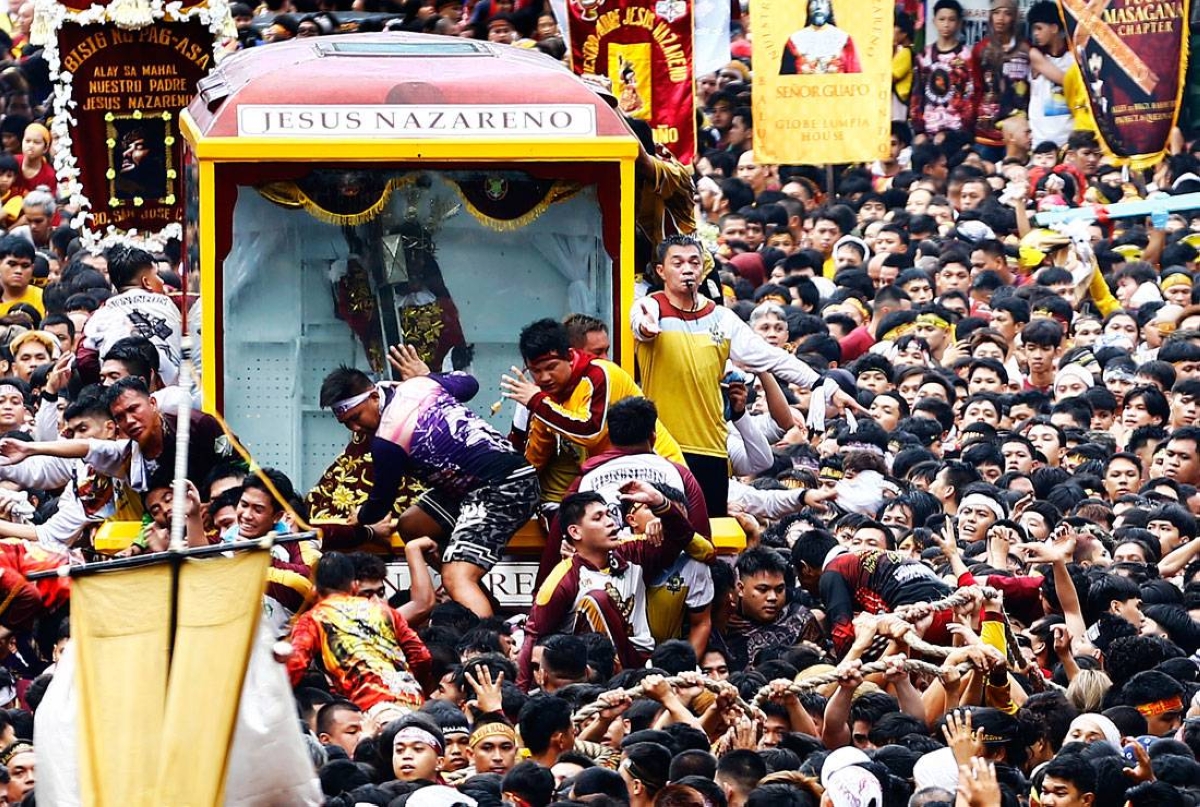In Manila, Philippines, hundreds of thousands of Catholic believers gathered on Thursday in a display of deep faith and devotion. They joined the annual procession of the Black Nazarene, a centuries-old statue of Jesus Christ believed to have miraculous powers. Despite the risks of injury, the faithful pushed through the crowded streets, hoping for blessings, healing, and miracles.
The day began before sunrise with an open-air mass, followed by the procession to Quiapo Church. Church officials expected over two million participants from across the country. The statue, a life-sized depiction of Jesus carrying a cross, was transported on a large carriage through a six-kilometer route.
Devotion Beyond Pain
Men and women, many barefoot and dressed in maroon to match the robe of the Nazarene statue, scrambled to touch the ropes pulling the statue’s carriage. For them, this act symbolizes their connection to Jesus and their prayers for good health.
Dong Lapira, 54, shared his experience from a previous procession where he suffered bruises and jostling while trying to pull the rope. He prayed then for his mother’s recovery from a heart attack and joined again this year, this time for his wife’s healing from gallstones.
“The Nazarene is very sacred. It has answered many prayers,” Lapira said, undeterred by the challenges.
Other devotees threw white towels to volunteers guarding the carriage, hoping the cloths, when wiped on the statue’s glass case, would carry blessings back to their families.
A Labor of Faith
Alvin Olicia, 38, one of the volunteer guards, said he gladly endured the heat and rain during the procession. His task was to catch the handkerchiefs thrown by the crowd and return them after wiping the statue’s case.
“Through this simple act, I feel I am helping connect people to their faith and the Nazarene,” Olicia shared.
Some devotees, ignoring safety warnings, climbed onto the carriage or on top of fellow participants to get closer to the statue, risking injury in the process.
Faith Across Generations
Ester Espiritu, 76, traveled over 35 kilometers from Cavite province despite her age and a lingering shoulder injury. For her, just seeing the Nazarene was worth the struggle.
“Even if it’s hard for me to come here, I feel happy and strong when I see the Nazarene,” she said, praying for healing and strength.
History of the Black Nazarene
The Black Nazarene arrived in the Philippines from Acapulco, Mexico, in the early 1600s during the Spanish colonial era. Its dark color is said to have been caused by a fire aboard the ship that brought it. Over the centuries, it has become a powerful symbol of faith and hope for millions of Filipinos.
A Nation United in Prayer
President Ferdinand Marcos acknowledged the event’s significance, calling it a “testament to our people’s solidarity and camaraderie” and highlighting God’s compassion and power.
Safety Amid the Crowds
To ensure the safety of participants, over 14,500 security personnel were deployed along the route. Emergency response teams and Philippine Red Cross volunteers treated more than 400 people for minor injuries and illnesses, such as dizziness, cuts, and nausea. Some were taken to hospitals for further treatment.
The event, lasting up to 18 hours, brought together not just the faithful but also volunteers and authorities, working together to support one of the most celebrated religious traditions in the Philippines.
For devotees, their sacrifices and struggles during the procession symbolize their unwavering faith in the Black Nazarene and their hope for a brighter future.

















